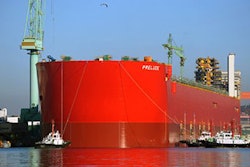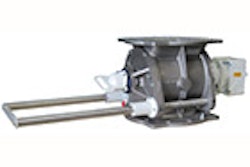Project success is not limited to an effective end product; it also requires that the project not exceed specified cost and stay on schedule throughout. Good planning is instrumental to achieving a successful project.
The term Front-End-Loading (FEL) refers to a project management process that involves developing sufficient project definition so that owners can make investment decisions, minimize risk and maximize the potential for success. Depending on the industry, FEL is also known as Pre-Project Planning (PPP) and Front End Engineering Design (FEED).
The foundation of all best practices associated with Front End Loading is the Influence Curve. The basic premise is that the majority of planning and design should be completed early in a project when the ability to accommodate design changes is relatively high while the cost of making those changes is still relatively low.
The FEL Process intentionally adds some cost and time to the early part of the project, but this is minor compared to the potential cost and effort required to make changes later in the project.
By extension, the more completely a project is defined, the less likely it is to experience cost performance issues due to the greater accuracy of the supporting cost estimate. AACE International (the Association for the Advancement of Cost Engineering) published a widely referenced Recommended Practice for a cost estimate classification system which assigns an expected accuracy range for each of the five different estimate classes based on the quality of the underlying project definition and the associated level of effort.
Contingency funds are intended to cover the cost of unforeseen variations in design parameters, quantities, pricing, or execution plans. It is generally accepted that the level of contingency included in a cost estimate is a function of the degree of project definition vs. uncertainty.
In more detailed cost estimates the recommended contingency will typically vary by scope area to reflect the relative uncertainty. The composite value across the entire estimate should correlate with the expected accuracy ranges shown above. As a result, as project definition increases, the need for contingency is expected to decrease, which reduces the amount of capital set aside for risk management. This additional capital is now available for other investments, as opposed to being sidelined throughout the entire project.
An FEL program typically utilizes a stage gate process in which a project must pass through formal steps or “gates” at well-defined milestones before funding is released to proceed to the next phase. Each gate will typically include a thorough stakeholder review to ensure that the project team is in agreement before requesting additional funding from senior management.
The Risks of Moving Forward Without an FEL, FEED or a Similar Gated Management Process
In the food industry, risks connected to any project include the typical cost and schedule dimensions, but more importantly, they also include the risks associated with producing a poor quality or unsafe product. This possibility demands the appropriate level of due diligence in project execution.
At the same time, the project life cycles in our industry usually reflect the constant pressure associated with meeting promises to stockholders for quarterly earnings results. Under these circumstances the temptation to push ahead can be irresistible. However, the companies that most consistently deliver successful projects have mastered the ability to slow down at the beginning and to plan appropriately before proceeding with execution.
Gateway to Success
The FEL process typically contains three “gateways” before proceeding with project execution and start-up. Passing through each gateway requires the completion, presentation and approval of specific activities.
FEL I: Conceptual Engineering / Financial Feasibility
The purpose of the first project phase, often called FEL I, is to present a concept review for making an informed decision about the project’s viability and whether or not to pursue it. Depending upon the size and complexity of the project, this stage can typically take approximately three to four weeks. Emphasis is placed upon establishing the business case, defining criteria for success, and developing the scope of work required to achieve those goals.
The criteria for success must establish how the project will change the business for the better. The business case, of course, documents the project’s financial benefit. The scope of work enables a preliminary cost estimate, which will typically have limited accuracy due to the need for numerous assumptions at this stage.
While an FEL I is based upon very preliminary information, getting it right lays the foundation for subsequent successful FEL phases. For example, the original concept for a project to upgrade a sauce processing line had included a separate flammable ingredient storage room. However, during the FEL I phase of the project, the engineering team quickly determined through review of the materials in question that the separate storage area could be eliminated.
This seemingly minor change saved the owner over $15,000 in projected engineering fees plus an additional $125,000 in construction related costs.
Stay tuned for part 2 where we will continue to discuss FEL II and III as well as a cost-benefit analysis for this project management process.
Jens Ebert, PE, is a Senior Project Manager and Senior Associate at SSOE Group. Jens has over 21 years of experience in the field of consulting engineering for clients in the food/beverage, industrial, nutraceutical, and military sectors. Many projects have included developing new and unique technologies and products in the market. Jens can be reached in SSOE’s St. Paul, MN office at 651.726.7672 or by email at [email protected].
References:
Association for the Advancement of Cost Engineering (AACE), Recommended Practice No. 18R-97: Cost Estimate Classification System (www.aacei.org)
Construction Industry Institute (2012), CII Best Practices Guide: Improving Project Performance, Implementation Resource 166-3, Version 4.0, (www.construction-institute.org)























